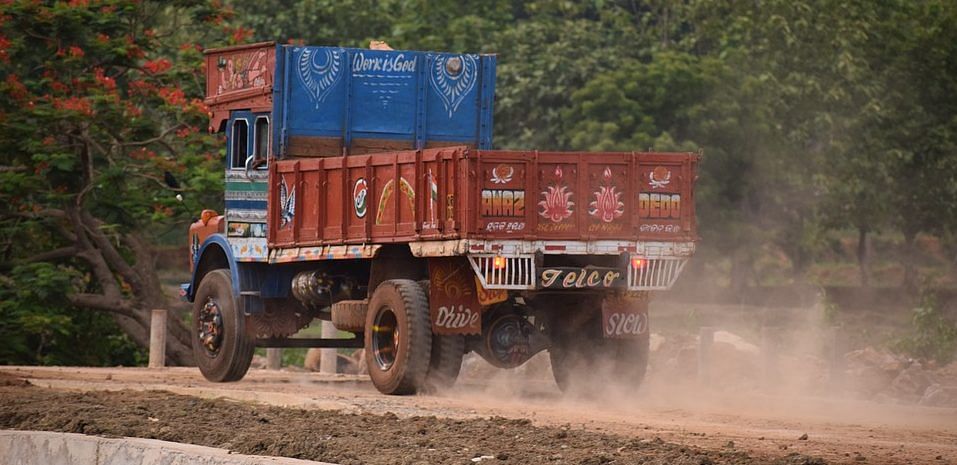The BJP-led government plans to complete 61,000 km covering over 19,000 habitations by March next year — the highest target set by it since 2014.
New Delhi: Racing against time to meet its rural road construction numbers ahead of the 2019 elections, the BJP-led government has stepped up the target for 2018-19 to an ambitious 61,000 km of road covering over 19,000 habitations.
This is more than three times the target set by the government in 2014-15 when it came to power and the highest since then.
Ensuring its rural road targets are met by March next year is politically and electorally crucial given the BJP faces a general election soon after, battling five years of anti-incumbency and hoping to encash its ‘pro-rural’ image.
The target for the number of kilometers to be constructed under the Pradhan Mantri Gram Sadak Yojana (PMGSY) in 2014-15 was around 21,700 while the number of habitations to be covered was around 4,700. The corresponding figures for 2015-16, 2016-17 and 2017-18 were 33,600 km and 10,000 habitations, 48,800 km and 15,000 habitation and 51,000 km and 15,000 habitations.
The budget allocation for the scheme in 2018-19 is Rs 19,000 crore.
PMGSY, launched under the Atal Bihari Vajpayee-led NDA government in 2000, aims to provide all-weather road connectivity in rural areas. Habitations in rural areas with a population of 500 people and above in the plains and 250 and above in hilly areas are eligible under the scheme.
Target 2019
Under PMGSY, the target initially set was to cover 1,78,184 habitations by 2022. However, towards the end of 2015, the government decided to advance the target to March 2019. At the time, it was also decided to convert the scheme from being fully Centre-sponsored to one with a centre-state funding ratio of 60:40 to overcome the fund shortage.
According to senior officials in the Rural Development Ministry, fund shortage had greatly slowed down the pace of work under the scheme between 2011 and 2014 to just about 70 km per day construction on an average.
After arrangements to raise funding were made in 2015 by changing the scheme’s structure, the pace of road construction was ramped up to 100 km per day on an average in the remaining part of the year, which went up to 130 km in 2016-17 and 134 km in 2017-18.
Targets achieved
As per the ministry, of the 1,78,184 habitations to be provided connectivity by 2022, around 1,45,000 have been covered and an additional 12,000 to 13, 000 have been covered under the Mukhyamantri Gram Sadak Yojana in some states, leaving 19,725 to be connected by March 2019.
Ministry officials say around 1,000 habitations among these could be ‘unfeasible’ due to geographical and logistical reasons, thus making the target 18,000-odd habitations.
The data available with the ministry shows 93 per cent of the target for road construction was met in 2017-18, with 11 states exceeding their targets – including Rajasthan, Madhya Pradesh and Chhattisgarh where assembly polls are due end of this year – and eight states meeting more than 80 per cent of it.
“We are well on our way to meet the target by March 2019. There might be some spillover to April, but we should be able to make it. The bulk of work now has to be in nine states, including Assam, Bihar, Chhattisgarh, Odisha, Jharkhand and West Bengal,” said a senior ministry official who did not wish to be identified.
As per the ministry’s estimates, it takes around 12 months to complete road construction in plain areas and 18 months in hilly regions.
Political relevance
As Prime Minister Narendra Modi addressed chief ministers and deputy chief ministers of the 14 BJP-ruled states earlier this year, he urged them to accelerate the implementation of welfare schemes and meet targets of flagship programmes.
With this, it became clear that the BJP’s key poll plank in 2019 would be its welfare and rural initiatives.
Free LPG connections under the Ujjwala scheme, the coverage of which was expanded in this budget to include 80 million poor families, houses under the PM Awas Yojana that promises ‘housing for all by 2022’, toilets, livelihood in rural areas and the promised health insurance scheme will be the hot selling points.
In this mix, rural roads will be a crucial ingredient, given bijli, sadak, paani (electricity, roads, water) are known to be perpetual poll issues.
